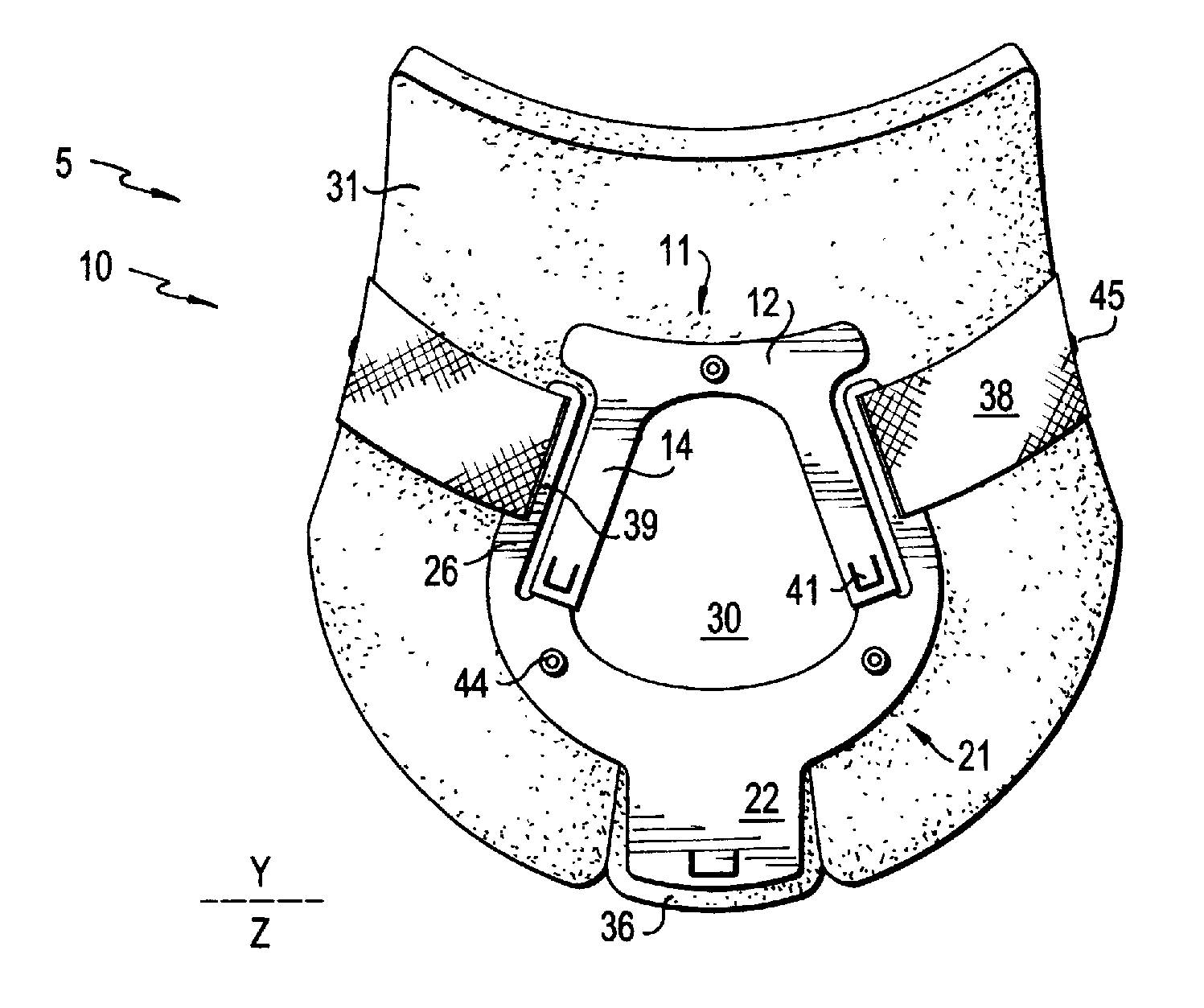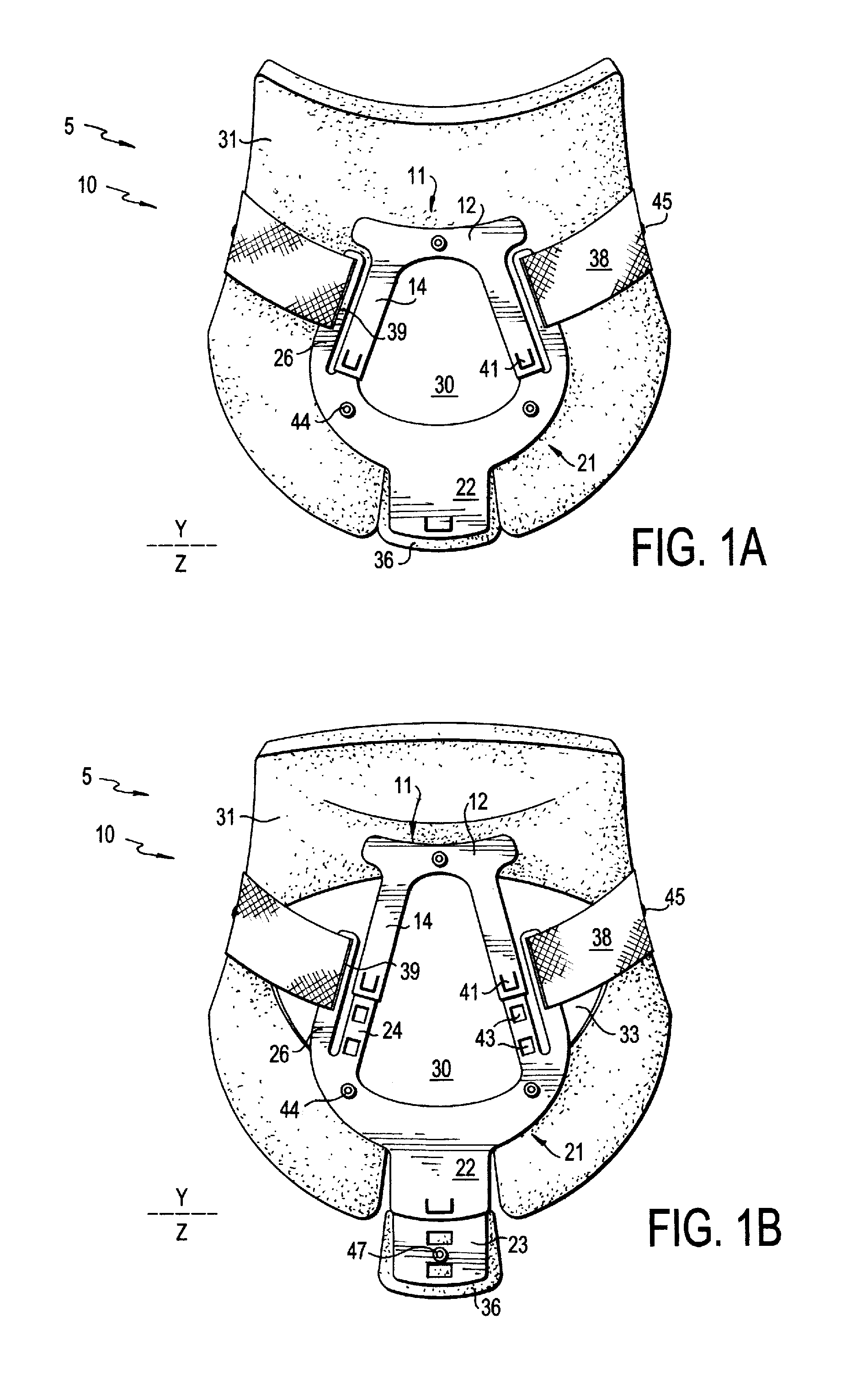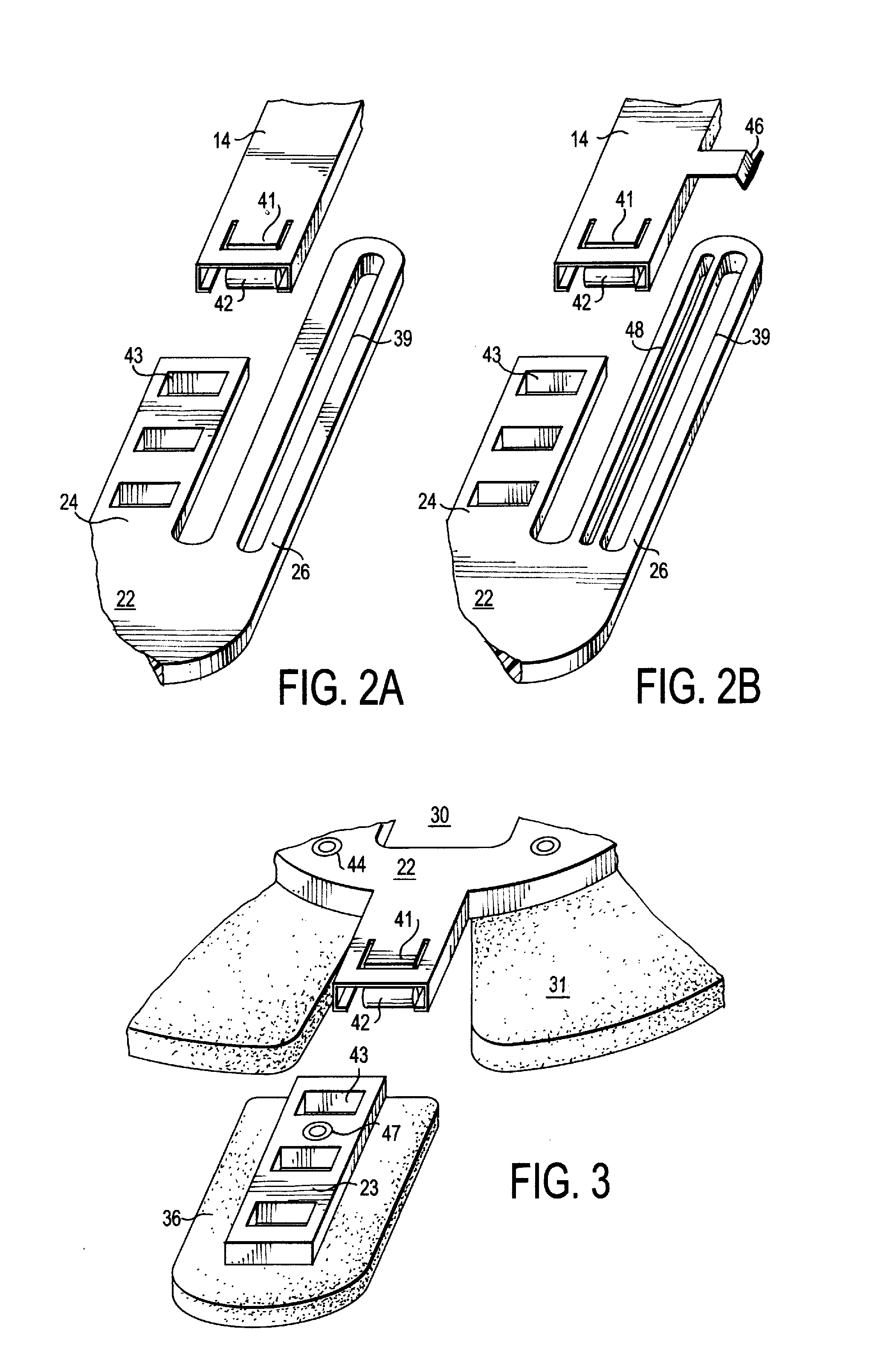Cervical collar with independent height and circumference adjustability
a cervical collar and adjustable technology, applied in the field of cervical collars, can solve the problems of unwanted head movement, increased labor intensity, and increased labor intensity, and achieve the effect of limiting the range of motion of the wearer's cervical spin
- Summary
- Abstract
- Description
- Claims
- Application Information
AI Technical Summary
Benefits of technology
Problems solved by technology
Method used
Image
Examples
Embodiment Construction
[0049]In describing the preferred embodiments of the present invention illustrated in the drawings, specific terminology will be resorted to for the sake of clarity. However, the present invention is not intended to be limited to the specific terms so selected, and it is to be understood that each specific term includes all technical equivalents that operate in a similar manner to accomplish a similar purpose.
[0050]Referring to FIGS. 1A, 1B, 5A, and 5B, the cervical collar 5 of the present invention includes a front portion 10 and a separate and distinct back portion 50 that, when used together, secure a wearer's head and neck to limit the wearer's flexion, extension, rotation, and lateral movement. Preferably, the front portion 10 and the back portion 50 each include injection molded, substantially incompressible, plastic material components such as polyethylene or nylon to increase the restrictive properties of the cervical collar 5. Preferably, the front portion 10 and the back p...
PUM
 Login to View More
Login to View More Abstract
Description
Claims
Application Information
 Login to View More
Login to View More - R&D
- Intellectual Property
- Life Sciences
- Materials
- Tech Scout
- Unparalleled Data Quality
- Higher Quality Content
- 60% Fewer Hallucinations
Browse by: Latest US Patents, China's latest patents, Technical Efficacy Thesaurus, Application Domain, Technology Topic, Popular Technical Reports.
© 2025 PatSnap. All rights reserved.Legal|Privacy policy|Modern Slavery Act Transparency Statement|Sitemap|About US| Contact US: help@patsnap.com



